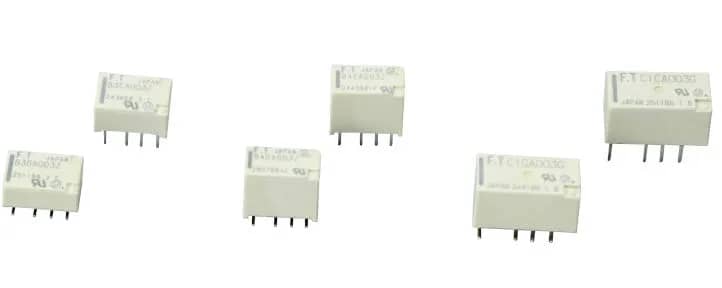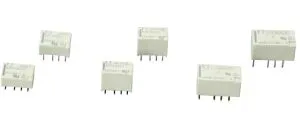“Conventional signal relays have often been used to switch signals for on-board equipment in electric vehicles,” according to the company. “However, electric vehicle batteries usually use 300 to 400Vdc. This exceeds the expected usage range of many signal relays.”
There are three types, each available in multiple variants:
- FTR-B3-AUT ‘low-profile’
10.6 x 7.5, x 5.2mm high, plus leads - FTR-B4-AUT ‘slim’
10.6 x 6, x 9mm high, plus leads - FTR-C1-AUT ‘high-insulation’
14.9 x 7.4, x 9.4mm high, plus leads
Coil-to-contact, B3 and B4 relays have 1mm clearance, 1.6mm creepage and 2.5kV withstanding. For C1 types, the figures are 2mm, 2.5mm and 5kV respectively.
All are two-pole change-over types with 30V 1A contacts that are also rated to operate with 400Vdc or 1mA.
Each type is available in through hole, surface-mount, and ‘space-saving’ surface-mount where the leads are cropped to be entirely under the body footprint.
Each type is also available with single-coil momentary or single-coil latching action. Coil options are: 3, 4.5, 5, 12 or 24V, with the additional options of 1.5, 6 or 9V for the two smaller types.
“They’re a great fit for switching audio circuits for emergency calls, battery controller applications including battery monitoring, abnormal detection of over-voltage and over-current, and low or high leakage detection,” said FCL. They “are manufactured at a certified factory in compliance with IATF16949. They are UL and CSA recognised and RoHS compliant”.
Data sheets:
FTR-B3-AUT ‘low-profile’
FTR-B4-AUT ‘slim’
FTR-C1-AUT ‘high-insulation’





